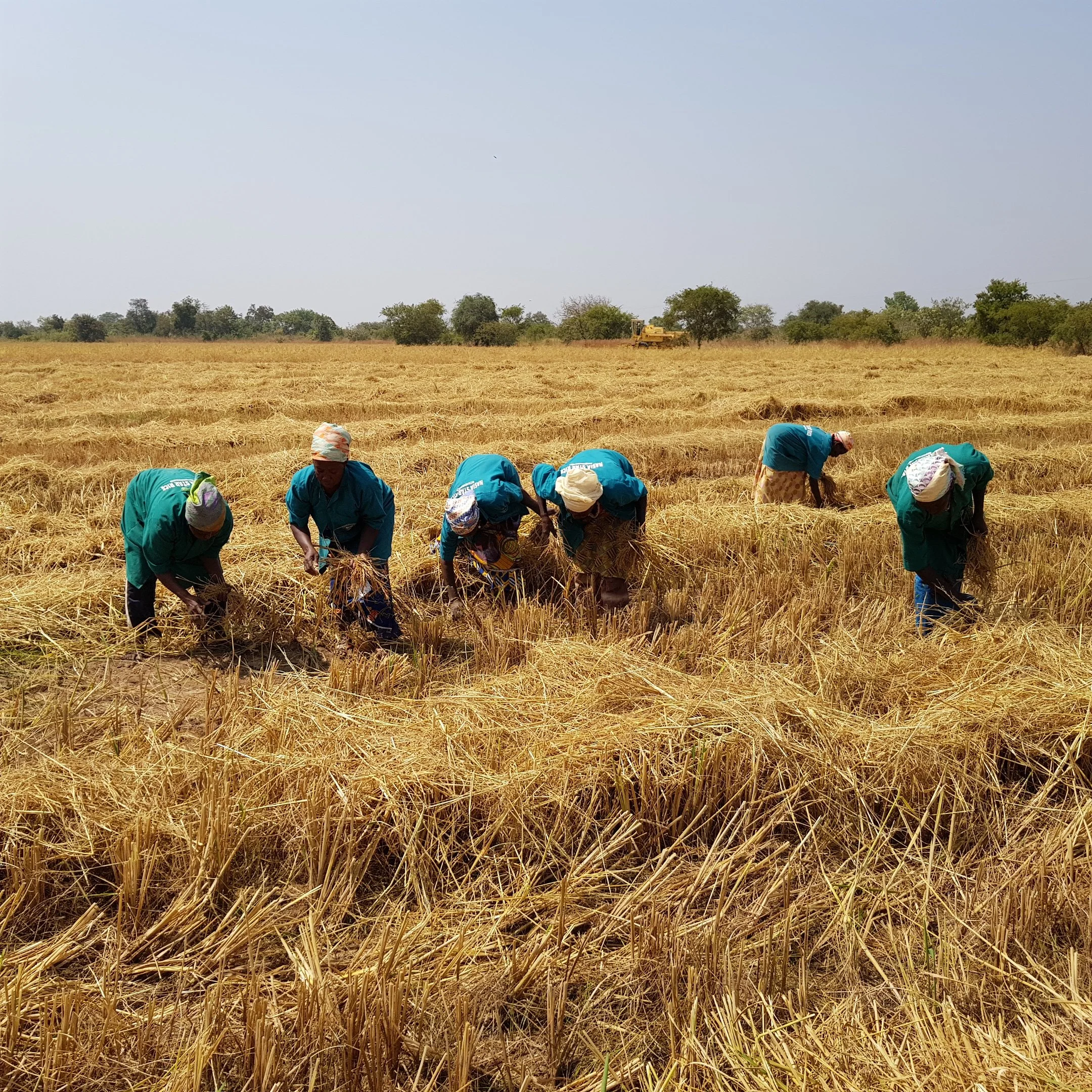The Price of a Plate
Rethinking value, sovereignty, and the hidden labor behind our daily food.
The Rhythm of Labor
In the early morning light of Saint-Louis, Senegal, I stood with a rice farmer as he walked me through his fields. The air was still, except for the rhythmic thud of a worker striking an empty oil gallon—his job, all day, was to keep the birds away.
When I asked how long this ritual would continue, the farmer smiled softly.
“Three more weeks,” he said.
Three weeks of patience. Three weeks of human time tethered to the rhythm of a grain.
Years later, in northern Ghana, I watched women harvesting rice by hand. A combine harvester had already rolled through, yet they moved behind it—bending, gathering, shaking off dust, saving what machines had missed. Mounds of grain grew in the sunlight, shimmering like bronze.
It was in that moment I understood: the true price of a plate is not measured in cedis or dollars, but in hours, hands, and endurance.
When Abundance Replaced Reverence
Growing up, rice was reserved for Christmas or birthdays. It was rare, precious—a food of celebration.
Today, it fills our tables daily, cheap and constant. Somewhere along the way, we traded meaning for efficiency.
In the 1960s, the U.S. Food for Peace program began shipping surplus rice to West Africa. Later, Asian imports flooded the market. In the name of access, we lost sovereignty. What once sustained local economies now struggles to survive against the weight of global trade and subsidy-driven “progress.”
But as I learned in Ghana’s Volta highlands, not all rice tells the same story.
A Different Grain, A Different Measure
In Hohoe, the rice doesn’t grow in flooded paddies. It grows on highland slopes, drinking rainwater and thriving without synthetic fertilizers.
By industrial standards, the yield per acre is lower. But when you look closer, the math changes.
No irrigation. Less strain on water resources.
No chemical inputs. Healthier soils, safer ecosystems.
Higher micronutrient content. Better for bodies, not just markets.
This is rice that respects its environment and nourishes its community. Yet it receives little research, support, or visibility—simply because it doesn’t fit the modern model of “efficiency.”
We measure the wrong things. We celebrate yield but ignore value.
One Food System, Many Blind Spots
We speak of food systems in the plural, as if what happens in Ghana is disconnected from choices in New York or Beijing. But food is one continuous web of exchange, policy, and consequence.
When aid floods a market, a farmer somewhere else walks away. When cheap imports replace ancestral crops, culinary traditions—and the ecosystems they sustain—erode.
The cost of a plate, then, is the distance between eater and grower, between taste and truth.
Redefining Leadership Through Food
Leadership in food systems isn’t just about innovation—it’s about remembrance.
To design equitable systems, we must include the people whose labor sustains them.
That means:
Reclaiming value at origin. Supporting smallholder farmers and heritage crops.
Redesigning research priorities. Measuring nourishment, not just volume.
Reconnecting consumers and producers. Because every bite is a vote for the future we want.
The women in Hohoe, the farmer in Saint-Louis, and the countless unnamed hands across the continent remind us that sustainability isn’t just technical—it’s human.
They are not relics of the past; they are custodians of resilience.
The Work Ahead
Across Africa, cooperatives are reviving indigenous grains. Chefs are building new pride in local ingredients. Researchers and advocates are finding ways to honor old wisdom within modern systems.
The future of food will not be found in laboratories alone—it will rise from the soil, the stories, and the songs of those who still work with both hands in the earth.
Maybe the real revolution begins not in grand declarations but in quiet recognition: that value and justice are already rooted in the fields.
Call Forward
💼 If your organization, university, or conference is exploring the intersections of food systems, sustainability, and leadership—let’s bring this conversation to your table.
